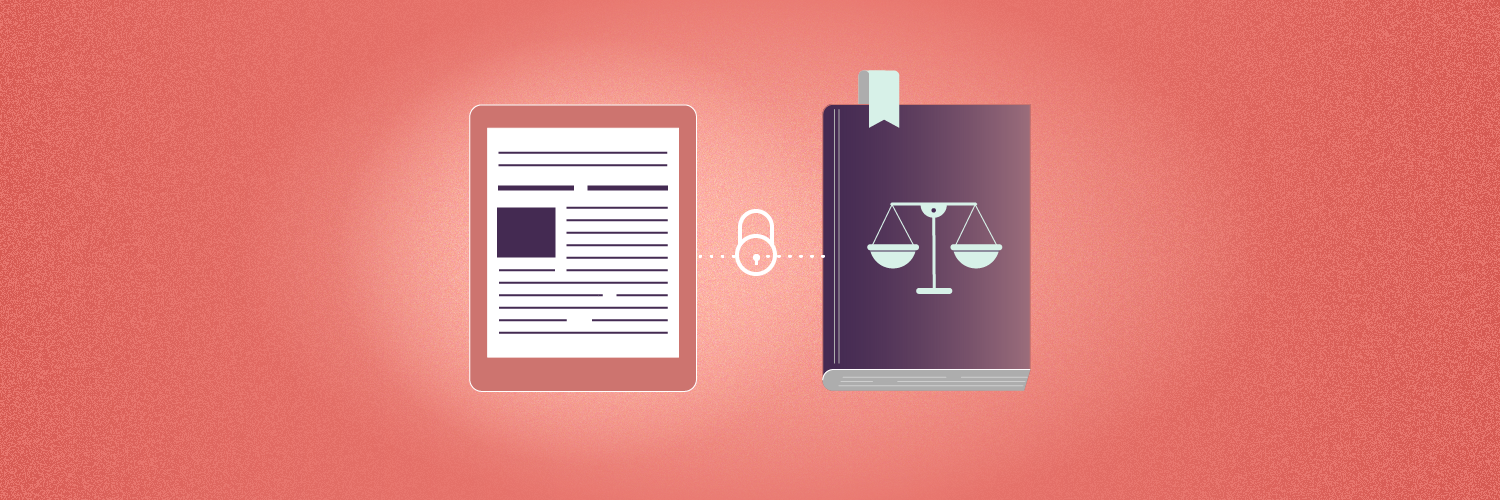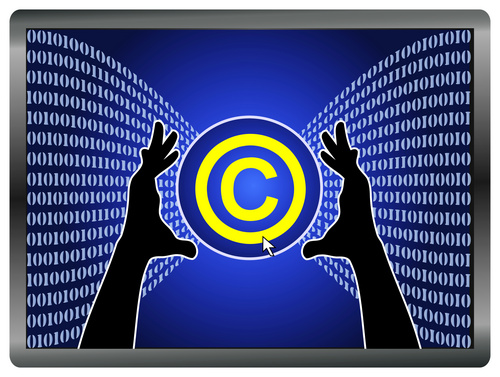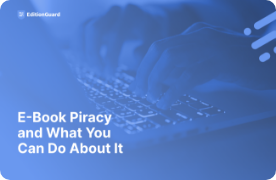
The internet is a blessing and a curse for people who make a living from creating and publishing creative works.
On the one hand, it has lowered the barrier to entry for artists, giving them unprecedented access to a massive market of potential customers. It has also given them environments and tools they can use to promote themselves and their work without the involvement of third parties who siphon revenue and dictate timelines. It has also opened the door for smaller, independent publishers who could, in the legacy publishing landscape, not compete with those who held a monopoly on the industry.
On the other hand, it has created an ecosystem where people who want to benefit illegally from the duplication and distribution of these works can thrive. Individuals with the time and inclination to leverage new technology to benefit from the theft and “resale” of another person’s work have never been in a better position than they are now. The relative anonymity offered by the internet along with difficulties in applying uniform regulations that cross geographic borders means that there is a stark lack of accountability for content pirates.
The lack of consistent and effective legal recourse means that there aren’t many deterrents for content pirates and this raises the question: How do authors and publishers of e-books protect their most valuable assets and income?
The answer is Digital Rights Management (DRM). DRM refers to the ever-evolving technologies and tools that are used to control access to any digital media file. DRM mechanisms attempt to limit the use, duplication, modification, and/or distribution of copyrighted works.
DRM also doesn’t necessarily refer only to functionality that prevents access, duplication, and distribution, but also technologies that are effective at deterring these behaviors, either by creating a platform for legal recourse, or by providing an incentive for an alternative, legal consumption of the work.
The owners of digital files have several options, many of which can be used in combination with one another, when it comes to implementing DRM on their work. In some cases, these DRM options are media-specific, meaning that a particular DRM mechanism that can apply to an e-book cannot be used for an audio file and vice-versa. In this post, we will be taking a detailed look at the various DRM options that the custodians of e-books have at their disposal.
Infringement Deterrents
The following DRM techniques act as pre-emptive deterrents for content piracy. Their goal is not to actively prevent the act of accessing, duplicating and distributing these files, but to provide strong incentive not to do so.
Register Copyright
As soon as the author is finished writing their e-book, they automatically have copyright on the material, meaning that any duplication of the material is prevented by law. However, for authors who reside in the US, there is added benefits to
registering the copyright.
Doing so is an additional deterrent because the author will be able to sue the perpetrator not only for loss of earnings but also
statutory damages and the recovery of legal fees.

(source:
stock.adobe.com)
Social DRM
This is a relatively new method of creating accountability when it comes to the ownership of an electronic media file. A mechanism championed by JK Rowling, who implemented this particular form of DRM on e-books purchased on
Pottermore.com, it “brands” the file with the name, contact details, or any other data that the publishers deems necessary.
That creates a scenario where the owner of an e-book can be identified as the source of a file’s illegal duplication and distribution. This level of transparency is proving to be a compelling way to motivate the owners of digital media not to share their files.
EditionGuard offers social DRM as an option to our subscribers. Implementing this mechanism on the books in your inventory is an extremely simple process and customers can opt in for this DRM mechanism without our more extensive DRM options.
See below for an example of a social DRM watermark that is deployed onto an e-book.

(Source:
Editionguard.com)
Access Control
This DRM method refers specifically to technology that acts as a border between the prospective content pirate and the file that they seek to duplicate.
Online Access Only
In the time before electronic devices were permanently connected to the internet, a customer’s ownership of an e-book was determined by the file residing on their tablet or e-reader. However, in the modern media landscape where devices are practically always online, it is possible to host the file in the cloud and allocate ownership by using a simple permission in the user’s profile on the hosting service.
This means that the only way that an e-book can be accessed is by having the owner’s login details which allows them onto the online platform where they open an read the book. This method also means that the physical file doesn’t exist on a device, making it impossible to access and duplicate.
While some users may balk at the notion of not having physical access to the file that they paid for, consumers’ understanding of digital media consumption is shifting in the direction of cloud-hosted ownership. This is thanks, in part, to popular streaming services like Netflix and Spotify which operate on a similar principle.
At EditionGuard, we offer this DRM option to our customers via our partnership with
Adobe Digital Editions - a secure e-book hosting and reading environment.
Duplication Prevention
These DRM methods refer functionality embedded into the e-book that prevents the duplication of its content.
Copy and Paste Prevention
Copying and pasting content is a rudimentary piracy method in which users circumvent any DRM functionality embedded in the file by “scraping” the text from the source document and pasting it into a destination file which is entirely free of any mechanisms that prevent duplication and distribution. This destination file can then be “repackaged” and passed on as an original.
By using functionality offered by DRM partners Adobe DRM, EditionGuard customers have the option to disable the ability for users to
copy the content of an e-book that they have access to on their device.

(Source:
stock.adobe.com)
Expiration Dates
One of the most effective ways to prevent an e-book from being copied is to implement an expiration date on the file.
Many DRM solutions, including
EditionGuard, enable authors and publishers to capture a length of time (or specific date) after which access to the file is revoked and the e-book is effectively “returned” as if it was borrowed from a virtual library.
In addition to the DRM benefits, this feature also enables publishers to create a different price-point for their products, offering customers permanent access to a file for one price, or temporary access for another price. Having these two options may appeal to a certain segment of your target market.
A Final Thought
Despite the ongoing investment in creating increasingly sophisticated techniques that prevent the piracy of e-books, there are always going to be individuals who find a way around these safeguards. Even the most effective deterrents, access, duplication, and distribution controls, are susceptible to innovative content pirates.
That’s why it is important to also implement re-active steps in finding sites where your e-books are illegally distributed. Make use of search engines to find sites that host duplicates of your files and
contact the site host to inform them that one of their clients are
infringing on copyright laws.
Owners of digital products have been battling against the unauthorized use of their products for decades and it seems unlikely that this war will ever come to an end.
Aside from the above steps it is important to partner with a DRM service that has your back. If you are an author or publisher looking to safeguard your digital assets, get in touch with us to start a
30-day free trial of our services.
Our services are easy to integrate with your website, with most popular e-commerce environments supported by our turnkey solution.
EditionGuard offers industry-leading DRM solutions at an affordable,
fixed monthly installment.
Contact us today to find out how we can help you protect your revenue.
 The internet is a blessing and a curse for people who make a living from creating and publishing creative works.
On the one hand, it has lowered the barrier to entry for artists, giving them unprecedented access to a massive market of potential customers. It has also given them environments and tools they can use to promote themselves and their work without the involvement of third parties who siphon revenue and dictate timelines. It has also opened the door for smaller, independent publishers who could, in the legacy publishing landscape, not compete with those who held a monopoly on the industry.
On the other hand, it has created an ecosystem where people who want to benefit illegally from the duplication and distribution of these works can thrive. Individuals with the time and inclination to leverage new technology to benefit from the theft and “resale” of another person’s work have never been in a better position than they are now. The relative anonymity offered by the internet along with difficulties in applying uniform regulations that cross geographic borders means that there is a stark lack of accountability for content pirates.
The lack of consistent and effective legal recourse means that there aren’t many deterrents for content pirates and this raises the question: How do authors and publishers of e-books protect their most valuable assets and income?
The answer is Digital Rights Management (DRM). DRM refers to the ever-evolving technologies and tools that are used to control access to any digital media file. DRM mechanisms attempt to limit the use, duplication, modification, and/or distribution of copyrighted works.
DRM also doesn’t necessarily refer only to functionality that prevents access, duplication, and distribution, but also technologies that are effective at deterring these behaviors, either by creating a platform for legal recourse, or by providing an incentive for an alternative, legal consumption of the work.
The owners of digital files have several options, many of which can be used in combination with one another, when it comes to implementing DRM on their work. In some cases, these DRM options are media-specific, meaning that a particular DRM mechanism that can apply to an e-book cannot be used for an audio file and vice-versa. In this post, we will be taking a detailed look at the various DRM options that the custodians of e-books have at their disposal.
The internet is a blessing and a curse for people who make a living from creating and publishing creative works.
On the one hand, it has lowered the barrier to entry for artists, giving them unprecedented access to a massive market of potential customers. It has also given them environments and tools they can use to promote themselves and their work without the involvement of third parties who siphon revenue and dictate timelines. It has also opened the door for smaller, independent publishers who could, in the legacy publishing landscape, not compete with those who held a monopoly on the industry.
On the other hand, it has created an ecosystem where people who want to benefit illegally from the duplication and distribution of these works can thrive. Individuals with the time and inclination to leverage new technology to benefit from the theft and “resale” of another person’s work have never been in a better position than they are now. The relative anonymity offered by the internet along with difficulties in applying uniform regulations that cross geographic borders means that there is a stark lack of accountability for content pirates.
The lack of consistent and effective legal recourse means that there aren’t many deterrents for content pirates and this raises the question: How do authors and publishers of e-books protect their most valuable assets and income?
The answer is Digital Rights Management (DRM). DRM refers to the ever-evolving technologies and tools that are used to control access to any digital media file. DRM mechanisms attempt to limit the use, duplication, modification, and/or distribution of copyrighted works.
DRM also doesn’t necessarily refer only to functionality that prevents access, duplication, and distribution, but also technologies that are effective at deterring these behaviors, either by creating a platform for legal recourse, or by providing an incentive for an alternative, legal consumption of the work.
The owners of digital files have several options, many of which can be used in combination with one another, when it comes to implementing DRM on their work. In some cases, these DRM options are media-specific, meaning that a particular DRM mechanism that can apply to an e-book cannot be used for an audio file and vice-versa. In this post, we will be taking a detailed look at the various DRM options that the custodians of e-books have at their disposal.
 (source: stock.adobe.com)
(source: stock.adobe.com)
 (Source: Editionguard.com)
(Source: Editionguard.com)
 (Source: stock.adobe.com)
(Source: stock.adobe.com)


